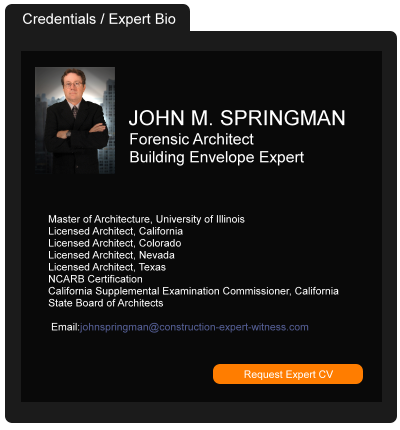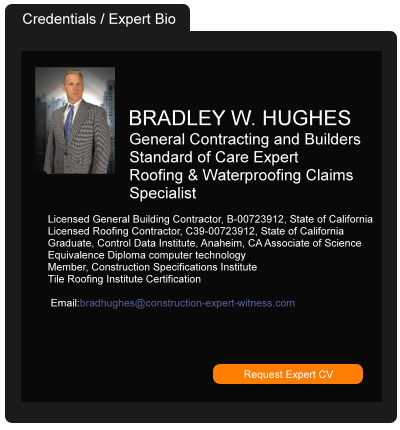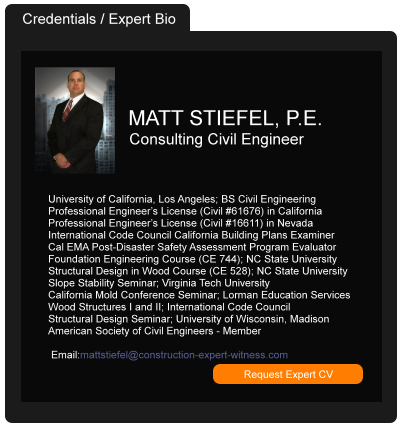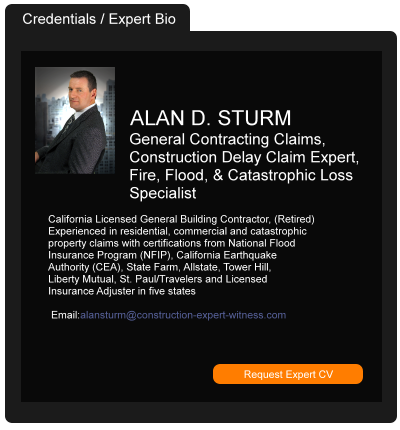LEED Certified Courthouse Square Negotiating With Insurers, Mulling Over Demolition
June 06, 2011 —
Douglas Reiser, Builders Council BlogApparently, Courthouse Square is still unresolved. The County hasnow hired an attorney to handle its insurance claim against Affiliated FM. Is there a lawsuit coming?
�Right now, no lawsuit is expected. According to officials, the insurer has been acting in good faith. But, its been quite a while since Salem officials learned that the Courthouse Square building had significant concrete issues that would result in probable demolition of the LEED certified building.
�If you have yet to hear about Courthouse Square, let me fill you in briefly. The Salem building was substantially completed in 2000 and LEED certified by the US Green Building Council in 2002. The project cost more than $30 Million to complete and the building was revered for its innovation as a crowning achievement for city leaders.
�But, structural problems in the building’s core were discovered as early as 2002, writes Chris Cheatham of Green Building Law Update. Final tests earlier in the year, determined that the building had to be vacated. The building has been clear since July 2010.
�Read the full story…
� �Reprinted courtesy of Douglas Reiser of Reiser Legal LLC. Mr. Reiser can be contacted at info@reiserlegal.com
Read the court decisionRead the full story...Reprinted courtesy of
Background Owner of Property Cannot Be Compelled to Arbitrate Construction Defects
November 07, 2012 —
CDJ STAFFIn Truppi v. Pasco Engineering, John Quattro sued Property Management Contractors, Inc. over construction defects in William Truppi’s home. All parties are named in the suit. The California Court of Appeals ruled that Property Management Contractors, Inc. (PMCI) could not compel Mr. Quattro to arbitration.
The background of the case involves two houses built in Encinitas, California by PCMI: one for Mr. Truppi at 560 Neptune, and one for Mr. Quattro at 566 Neptune. Both contracts contained an arbitration provision. Mr. Quattro signed the contract for his residence and Mr. Truppi signed the other. Mr. Quattro then sued PCMI and its principal, William Gregory. Mr. Quattro claimed to be the true contracting party for the 560 Neptune residence and a third party beneficiary of the contract Mr. Truppi signed, and stated that PCMI was aware of this.
PCMI in a demurrer stated that Quattro “had only a ‘prospective beneficial interest in the property upon its eventual sale or lease.’” Mr. Quattro amended his complaint to account for the issues raised by PCMI. The court rejected PCMI’s demurrer to the amended complaint.
Finally, PCMI and Gregory asserted that Quattro was “not the real party in interest” and could not sue. PCMI continues to assert that Quattro lacks standing, but their attorney sent Quattro an e-mail stating, “While my client disputes that you are a party, and that you lack standing to assert the claim, to the extent you do so I believe you are obligated to proceed by way of arbitration.”
The court did not cover the issue of Quattro’s standing in the case, only if he could be compelled to arbitration. The court affirmed the lower court’s finding that Quattro could not be compelled to arbitrate the construction defect claim as neither he nor Gregory signed the contract in an individual capacity. Further, the court noted that PCMI and Gregory “denied the existence of an agreement between themselves and Quattro on the 560 contract,” and cannot compel arbitration on a non-existent agreement. And while non-signatories can, in some situations be compelled to arbitrate, the court found that “these cases are inapplicable because here they seek to have the alleged third party beneficiary (Quattro) compelled by a nonsignatory (Gregory).” The arbitration clause in question “expressly limited its application to persons or entities that signed the 560 contract.”
As Mr. Quattro was not a signatory to that agreement, the court found that he could not be held to its arbitration provision.
Read the court decisionRead the full story...Reprinted courtesy of
Firm Leadership – New Co-Chairs for the Construction Law Practice Group
July 02, 2024 —
Haight Brown & Bonesteel LLPPartners Yvette Davis and Beth Obra-White have been named co-chairs for the firm’s Construction Law Practice Group. Yvette, Beth and other diverse leaders within the firm play an integral role in the firm’s Diversity, Equity & Inclusion initiatives.
Congratulations to Yvette & Beth for their new roles as practice group leaders!
Reprinted courtesy of
Haight Brown & Bonesteel LLP
Read the full story...
Read the court decisionRead the full story...Reprinted courtesy of
Brown Paint Doesn’t Cover Up Construction Defects
April 25, 2012 —
CDJ STAFFIn a decision that describes the case as illustrating “the perils that real estate brokers and their agents assume when acting as a dual listing agent to both the buyers and sellers of the same house,” the California Court of Appeals has issued a decision in William L. Lyon & Associates v. The Superior Court of Placer County. Lyon & Associates sought summary judgment to dismiss the claims of the Henleys who bought a home in a transaction where a Lyon agent represented both sides.
�The prior owners of the home, the Costas, had used a Lyon agent in purchasing their home. When they later sought to sell it, that agent “became aware of some of the house’s defects and problems.” In response, the Costas sought the help of another agent, Connie Gidal, also of Lyons & Associates. Photos taken in the presence of Ms. Gidal show defects of the paint and stucco. The Costas also took the step of painting the house dark brown. During the sale process, “rain caused many of the painted-over defects to reappear.” The Costas “purchased more dark brown paint and covered up the newly visible damage prior to inspection by the Henleys.”
�With the damage concealed, the Henleys bought the home in May 2006. The agreement with Lyons & Associates noted that “a dual agent is obligated to disclose known facts materially affecting the value or desirability of the property to both parties.” Escrow closed on May 9, 2006. The contract with the broker included a two-year limit on the time to bring legal action.
�The Henleys moved in during June 2006, and “began to discover construction defects that had been concealed by the Costas.” In addition to the painted-over stucco problems, the Henleys found that the Costas had “installed quartzite stone overlays on the backyard steps in a manner that caused water intrusion on the house’s stucco walls.”
�In May 2009, the Henleys sued the Costas, Ron McKim Construction, Lyons & Associates, and Ms. Gidal. Their complaint alleged that Lyons & Associates had committed breach of contact, negligence, fraud, breach of fiduciary duty, and negligent nondisclosure in connection with the construction defects. The Costas named Lyons in a cross complaint. Lyons moved for summary judgments on the grounds that the two-year statute of limitations had expired before the complaint and cross-complaint were filed. Both the Henleys and the Costas opposed this claim. The court denied the motion and Lyons appealed.
�The appeals court upheld the denial, noting that the both California Supreme Court decision and later action by the legislature compels real estate brokers and salespersons “to conduct a reasonably competent and diligent visual inspection of the property offered for sale.” The court noted that under California law, brokers have responsibilities to both sellers and buyers. The section of law cited by Lyons applies to seller’s agents. The court rejected the contention by Lyons that they were “cooperating brokers.” The Henleys were “not constrained by the two-year statute of limitations.”
�Lyons contended that even if California’s statute did not apply, there was a contractual limit of two years. The court also rejected this, agreeing with the Henleys that “the two-year limitation period must be extended by the discovery rule.”
�The court noted that “Lyon & Associates may not reap the benefit of a shortened contractual limitation period when its own alleged malfeasance contributed to the delay in the discovery of the buyer’s injury.” The court found that the Henleys could proceed with their breach of contract claim, because, “when a breach of contract is committed in secret, such as the intentional nondisclosure of a real estate broker regarding a previously visible construction defect, the contractual limitations period is properly held subject to the discovery rule.” The court felt that the interpretation favored by the California Association of Realtors would “halve the applicable statute of limitations period.”
�In addition to rejecting Lyon request for summary judgment on the claims made by the Henleys, the court also rejected the request of summary judgment on the claims made by the Costas, concluding that neither claim is time-barred. Costs were awarded to both the Henleys and Costas.
�Read the court’s decision…
� Read the court decisionRead the full story...Reprinted courtesy of
Construction Contract Clauses Which Go Bump in the Night – Part 1
November 10, 2016 —
Garret Murai – California Construction Law BlogScope, time and cost provisions may be the most important clauses in your construction contract but they’re not the only ones which can impact your bottom line. The first in a multi-part series, here are some other important construction contract clauses you may (or may not realize you should) be losing sleep over.
Provision: Incorporation and Flow-Down Provisions
- Typical Provision: “The term ‘Contract Documents’ shall include, without limitation, the Prime Contract, drawings, specifications and other agreements between Contractor and Owner, insofar as they relate in any way, directly or indirectly, to Subcontractor’s Work under this Agreement, and are hereby incorporated by reference. Subcontractor agrees to be bound to Contractor in the same manner and to the same extent as Contractor is bound to Owner under the Contract Documents. Where, in the Contract Documents, reference is made to Contractor, and the work and specifications therein pertain to Subcontractor’s trade, craft, or type of work, such work or specifications shall be interpreted to apply to Subcontractor rather than Contractor.”
- What it Means: An incorporation provision literally “incorporates” another document or documents into a contract by merely referring to them by title or description and it is not uncommon for a lower-tiered contractor to never see those documents.
A flow-down provision requires a lower-tiered contractor to comply with all obligations which a higher-tiered contractor, typically a direct contractor, owes to a higher-tiered party, typically, the owner. The intent of the provision to ensure that a lower-tiered subcontractor has no greater rights against a direct contractor has against the owner.
- What You Can Do: Lower-tiered contractors should obtain a copy of all documents to be incorporated into their contract and review them to ensure that they understand the obligations and any limitations to their rights.
Lower-tiered contractors should also seek to include language requiring that a higher-tiered contractor assume toward the lower-tiered contractor all obligations and limitations on their rights that the owner assumes toward or is subject to with respect of the general contractor.
Read the court decisionRead the full story...Reprinted courtesy of
Garret Murai, Wendel Rosen Black & Dean LLPMr. Murai may be contacted at
gmurai@wendel.com
Adaptive Reuse: Creative Reimagining of Former Office Space to Address Differing Demands
March 27, 2023 —
Cait Horner, Allan C. Van Vliet & Adam J. Weaver - Gravel2Gavel Construction & Real Estate Law BlogEmpty office buildings downtown. A housing shortage in almost every major market. Is there a way to address both issues at once by converting historic but underutilized office buildings into apartments and condos in city centers? It’s an idea that has been discussed, and in some cities, implemented in recent years. But while the idea seems simple enough—repurpose existing office space for residential and mixed-use projects—there are some real challenges limiting the feasibility of large-scale office to residential conversion.
The commercial real estate market is facing an uncertain future. Even as some companies have started requiring that their workers return to the office, many continue to operate under their hybrid or fully remote working models, which companies may commit to permanently. And while some big cities have seen office occupancy levels increase in the past few months (CBRE notes that Austin and Houston both saw occupancy levels above 60% in January, up around 25% from 2022 levels), the ongoing impact of COVID-19 and uncertainty in the global financial markets are keeping many office buildings empty in major cities around the country. Those tenants who are returning to the office are focusing their search for office space on high-quality, sustainable, amenity-filled spaces to entice workers to return to the office. This flight to quality leaves some older and, in many cases, architecturally relevant, office buildings behind. As a result, there are growing opportunities for the potential adaptive reuse of these existing underutilized structures.
Reprinted courtesy of
Cait Horner, Pillsbury,
Allan C. Van Vliet, Pillsbury and
Adam J. Weaver, Pillsbury
Ms. Horner may be contacted at cait.horner@pillsburylaw.com
Mr. Van Vliet may be contacted at allan.vanvliet@pillsburylaw.com
Mr. Weaver may be contacted at adam.weaver@pillsburylaw.com
Read the court decisionRead the full story...Reprinted courtesy of
Engineering, Architecture, and Modern Technology – An Interview with Dr. Jakob Strømann-Andersen
September 14, 2020 —
Aarni Heiskanen - AEC BusinessWe sat down with Dr. Jakob Strømann-Andersen of Henning Larsen’s Sustainability Engineering Department. Our talk covered the need for interdisciplinary research, sustainable practice, and how technology will lead change in the years ahead.
Can you tell us a bit about your professional background and what you’re currently working on?
I’m a partner with Henning Larsen and work with around 300 architects globally. We’re based in Copenhagen where we’re 200 people strong, with branches throughout the world. I’m a trained engineer with a civil engineering background – making me the first partner that’s not an architect. I’ve been with the company for 15 years and joined as an industrial research Ph.D. in Denmark. For my first three years here, I was employed as a researcher doing research and energy-efficient building design. And that’s where we started with our approach to sustainability.
Read the court decisionRead the full story...Reprinted courtesy of
Aarni Heiskanen, AEC BusinessMr. Heiskanen may be contacted at
aec-business@aepartners.fi
Hurricane Ian: Florida Expedites Road Work as Damage Comes Into Focus
October 10, 2022 —
Derek Lacey - Engineering News-RecordHurricane Ian’s devastation is coming into view days after the storm decimated southwest Florida. Work is underway to rebuild much of the state’s electrical, transportation and other infrastructure, with certain emergency road repairs expedited and restoration of power prioritized after the storm's devastation left millions in the dark and washed out roadways serving as the only access to barrier islands such as Sanibel Island and Pine Island.
Reprinted courtesy of
Derek Lacey, Engineering News-Record
Mr. Lacey may be contacted at laceyd@enr.com
Read the full story... Read the court decisionRead the full story...Reprinted courtesy of


































































